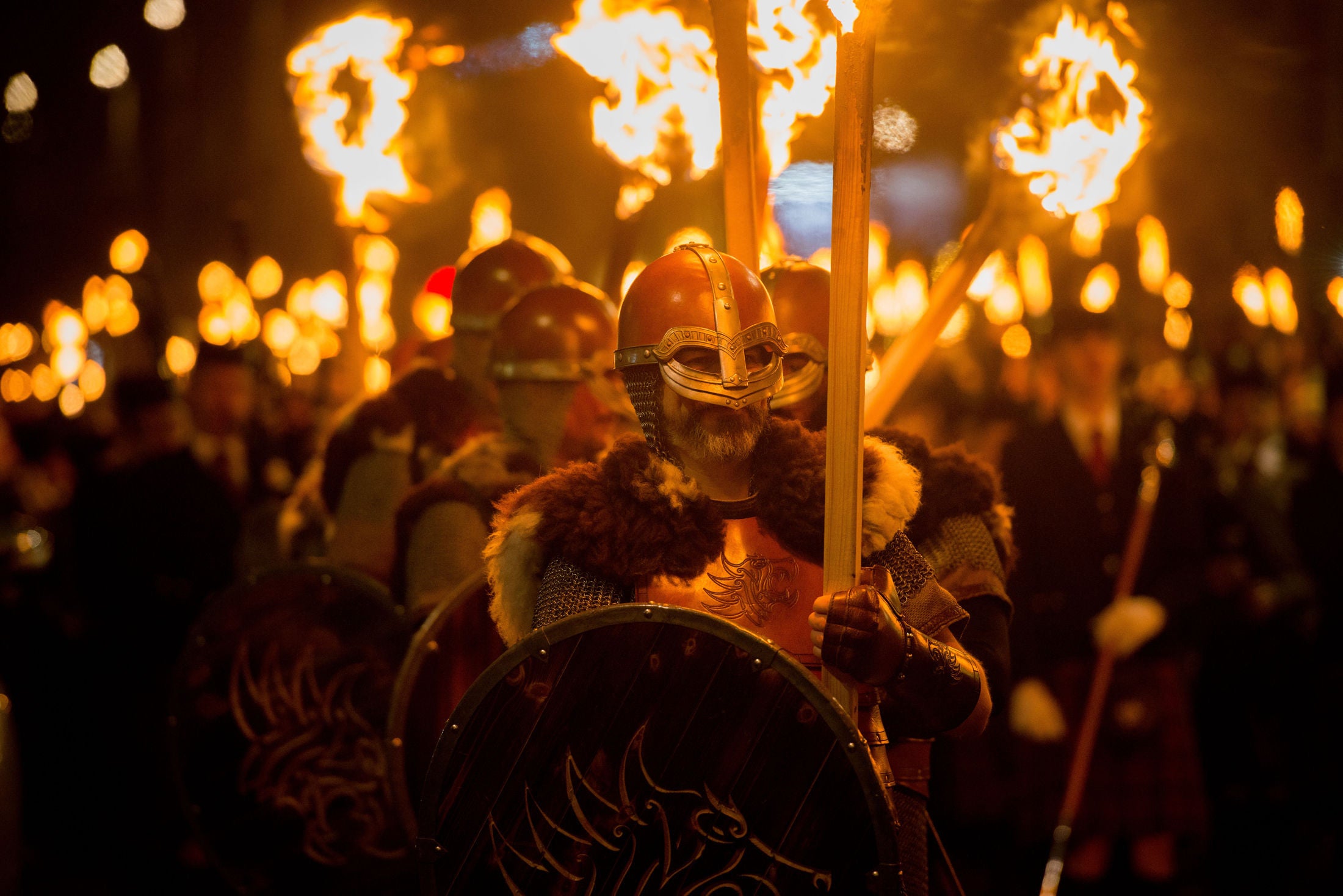After Cheddar Man: How the mongrel English found their home during the Dark Ages
An early Anglo-Saxon Christian burial site in Trumpington and another burial site in Derbyshire with Great Viking Army remains are two great clues to our history


Two archaeological finds caught my eye recently, for they seemed to shed light on what we often call the “Dark Ages”. This was the period between the withdrawal of the Romans from Britain in the early 400s AD and the Norman Conquest in 1066. Obscure though it may be, it was an important era, as a multiplicity of independent kingdoms eventually merged together to form one country, England, with its mongrel people, the English.
As Robert Tombs puts it in The English and Their History, the England that emerged from the Dark Ages had a population of more than 1.5 million, which was densest in the eastern and southern shires. An export trade in wool, an economic mainstay for centuries to come, was being established. Roads, bridges and harbours were publicly maintained under royal authority. Investment had accumulated. There were some 6,000 water mills, the most complex machinery of the time.
Anything that illuminated that period would be valuable. The first finding I mentioned was the discovery of an early Anglo-Saxon Christian burial site in Trumpington outside Cambridge. In the grave were the remains of a teenage girl from the mid 7th century AD. There was a gold and garnet cross on her chest; this had probably been sewn into her clothing. She had been placed on an ornamental bed. Archaeologists believe the grave was dug between 650 and 680 AD.

The second was final confirmation that a burial site in Derbyshire first uncovered in the 1980s does indeed contain remains from a Great Viking Army. In 873 or 874, a Great Viking Army overwintered at Repton, one of only a few places in England where a winter camp has been located. Excavations from 1974 to 1988 found their D-shaped earthwork on the riverbank and identified a mass grave of some 250 individuals, covered by the kerb stone of its former cairn. Now inconsistencies in the radiocarbon dating have been resolved.
We are thus dealing with two of the four large-scale invasions of England that took place in the first millennium AD. It starts with the Romans, then the Anglo-Saxons, who were followed by the Vikings and, finally, the Normans. That Britain had these uninvited visitors is not surprising, for England’s wealth was well known to its neighbours. As soon as the armed Roman presence disappeared, England was vulnerable.
A historian who has written well about these events is Peter Heather in his book, Empires and Barbarians, which has also been translated into French. Heather is Professor of Medieval History at Kings College, London. He tackled the once widely held idea that the Anglo-Saxons engaged in ethnic cleansing and pushed the Romano-British population of Celtic origin westwards into Wales, Devon and Cornwall or across the sea to Brittany. I don’t remember if I was taught this story at school, but it is roughly what I thought had happened.
Apart from anything else, according to Professor Heather, the population of late Roman Britain was in fact extremely large, between some 3 to 7 million people. The idea that such a large group could be driven westwards by newcomers doesn’t make sense. Furthermore, unlike the Vikings, who were invaders, albeit without a master plan, the arrival of the Anglo-Saxons was a migration, in other words, a flow of people across the North Sea during the 400s and 500s AD – with Anglo-Saxon kings following a little later. Of course, the Anglo-Saxons came prepared to engage in whatever fighting was necessary to establish themselves. They rewarded themselves by diverting Roman taxes into their own pockets and by dividing up the deserted Roman estates once run from Roman villas.
As a result, the bulk of the Romano-British population remained in place and massively outnumbered the immigrants, but over time, absorbed the latter’s material and non-material culture until immigrant and native became indistinguishable. At first glance this is a surprising process. But the newcomers must have applied just enough pressure to hasten integration.

Now what adds interest to the discovery of the Christian burial site is that Heather emphasises that by 600 AD the region’s Latin speaking Christian élite had been replaced by Germanic speaking non-Christians. In fact, the teenager’s grave also contained other items – an iron knife and a chain that would have hung from the waist along with some glass beads, which seemed to have been kept in a purse on the end of the chain.
Dr Sam Lucy, a specialist in Anglo-Saxon burial from Newnham College, Cambridge, said: “The custom of grave goods was long established in the pagan period, but it doesn’t mean that the burials at Trumpington weren’t Christian." Dr Lucy added: “The church never issued any edicts against the use of grave goods, but it’s something that does seem to fade away by the 8th century, just at the point where Christianity was becoming the dominant religion. There is, though, a time through the second half of the 7th century, where clearly Christian people were still making use of a limited range of goods within their burials, and these often carried explicitly Christian symbolism, such as the cross here…The Trumpington burial does seem to belong at that transition between the two religions.”
By now Christianity was spreading across northern Europe. Ireland was the first, in the fifth and sixth centuries; there followed Pictish Scotland, England and central Germany in the seventh century, Saxony by force after Charlemagne’s conquests in the eighth, Bulgaria, Croatia and Moravia in the ninth, Bohemia in the tenth, Norway, Iceland and Hungary in the years around 1000, Sweden more slowly across the eleventh century.
In England, the kings of Kent were the first to convert to Christianity, thanks to a mission from Rome. This took place in 597. Another missionary converted the kings of Wessex (ie, Hampshire and Berkshire) in the 630s. The Northumbrian kings in the north were finally converted from Ireland at the same time. However, after 670, a new archbishop of Canterbury, Theodore of Tarsus, a Byzantine appointed by the Pope, united all the bishops of the Anglo-Saxon kingdoms into a single hierarchy. The Anglo-Saxon church was, from then on, fully integrated into that of the rest of western Europe, and increasingly resembled it.
In the 800s and 900s, Europe was attacked by the Vikings (or Danes or Northmen) from the north and the west. The Vikings, or we should more appropriately call them, the “Scandinavians”, active between 800 and 1000 AD, could scarcely have been more different from the Anglo-Saxons. They were a waterborne force that exploded out of the Baltic Sea. They didn’t pause when they reached a coastline, but they travelled many miles up navigable rivers. They hunted for material wealth wherever they could find it. Essentially they were pirates.
In most cases, Scandinavian settlement in a given locality was preceded by a lengthy period during which that same place was targeted for moveable wealth. There was a huge amount to be made by raiding. Viking assaults on ninth century France extracted 340kg of gold and 20,000kg of silver. Raiding produced loot of all kinds, including slaves.
One of the Vikings’ favourite targets was a rich monastery. In western Europe, for instance, Viking raiding began with the sacking of the famous island monastery of Lindisfarne off the Northumbrian coast in 793. Between 786 and 802, three Viking ships landed at Portland on the south coast of Britain.
In his book, Viking Britain, Thomas Williams quotes the account given in the Anglo-Saxon Chronicle: “There came for the first time three ships of Northmen…” and they “landed in the island which is called Portland”. The King’s reeve, who was then in a town called Dorchester, “leapt on his horse, sped to the harbour with a few men (for he thought they were merchants rather than marauders), and admonishing them (the Northmen) in an authoritative manner, gave order that they should be driven to the royal town. And he and his companions were killed by them on the spot.”
Monasteries within Ireland, so long as they could be reached by river, became subject to attack for the first time in 836. Ten years later, a Viking leader led his followers up the Seine as far as Paris itself. They were aiming at the Abbey of St Germain des Prés on the left bank. It was probably the richest monastic foundation of western Europe.
The monks, however, notes Professor Heather, had shifted their treasures up river for safety. And the abbey church of St Germain still stands, with its clock tower dating back to Viking times, the oldest church in Paris.
Now the Great Viking Army was a coalition of warriors, primarily originating from Denmark but with elements from Sweden and Norway, who came together under a unified command to invade the four Anglo-Saxon kingdoms that constituted England in AD 865. This wasn’t to be a flow of people across the seas to Britain, the purpose of the Great Viking Army was to conquer.
In 867 units of the Viking army broke into York and attacked Northumbria. They conquered East Anglia in the 870s, and eventually achieved a further victory over Mercia in 874. King Alfred, however, repulsed the Viking Army from Wessex with a famous victory at Edington, Wiltshire, in 878.
In a crucial turn in the whole story, the Viking leader, Guthrum, accepted Christian baptism and then retreated into East Anglia. There was formed so-called Danelaw, an area in which the laws of the Danes led sway. It comprised York, Nottingham, Derby, Lincoln, Cambridge, Northampton, Huntingdon, Bedford and Hertford together with parts of the counties of Suffolk, Norfolk and Middlesex.
Heather analyses Danelaw as follows: the basic migration unit was the individual Great Army contingent of up to a thousand men, whose leaders organised the allocations of lands to those who were ready to settle. The new dominant Norse class lived much more cheek by jowl with their Anglo Saxon peasant labourers than the Normans who were to follow. Norse became the prevalent language. And many Norse words have remained in spoken English, such as ransack, window, slaughter, aloft, husband, blunder, happy, heathen, scales (for weighing).
There were kings in Danelaw after 878, but never a king of Danelaw. The centre of Lincoln, for instance, probably saw some Viking construction; outside the town, settlement seems to have come in two forms. Some of the estates were received intact by leading Vikings. Other Anglo-Saxon estates were broken up and parcelled out in individual holdings to Vikings of lesser but still free status. Such landed estates were taken from secular owners who had been killed or exiled or from Church institutions.
Meanwhile in England, Alfred, having fortified the major West Saxon towns, occupied the non-Scandinavian controlled southern half of Mercia. This was the basis for his son Edward “the Elder” and daughter Æthelflæd (who ruled Mercia) to conquer the Scandinavian kingdoms of southern England in the 910s, and for his grandson, notably Æthelstan (924-39) to push north as well. By 954 Northumbria was in their hands, except for the autonomous earldom of Bamburgh in the far north. This West Saxon conquest unified, indeed created, England for the first time; already Alfred called himself “King of the Anglo-Saxons” and the term “England” slowly began to be used from now on. A mongrel people had at last secured a safe place in which to live.
Join our commenting forum
Join thought-provoking conversations, follow other Independent readers and see their replies
Comments
Bookmark popover
Removed from bookmarks